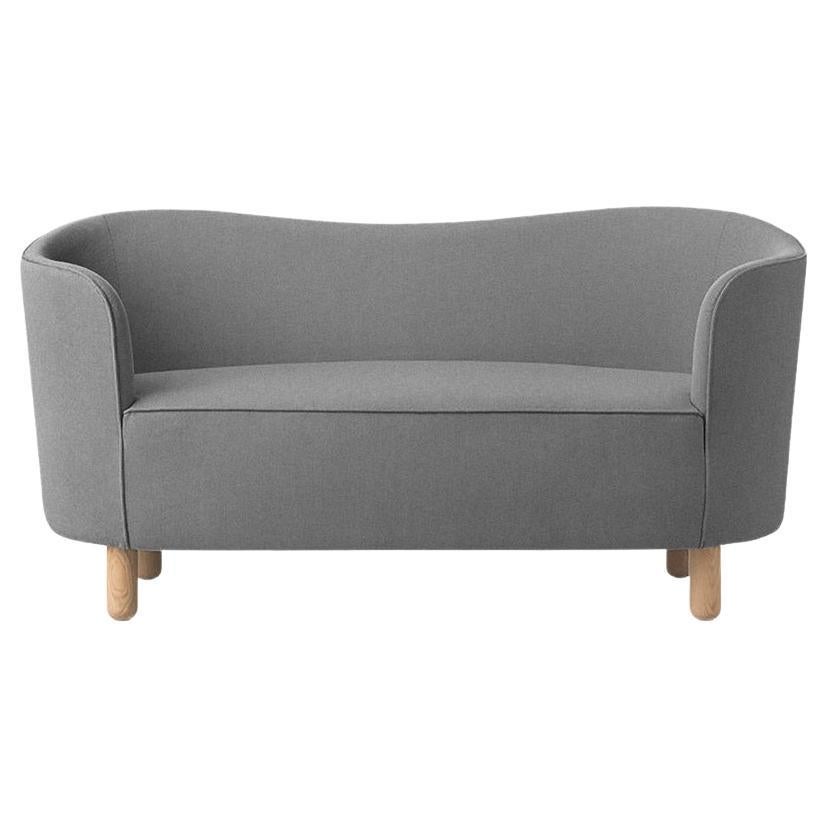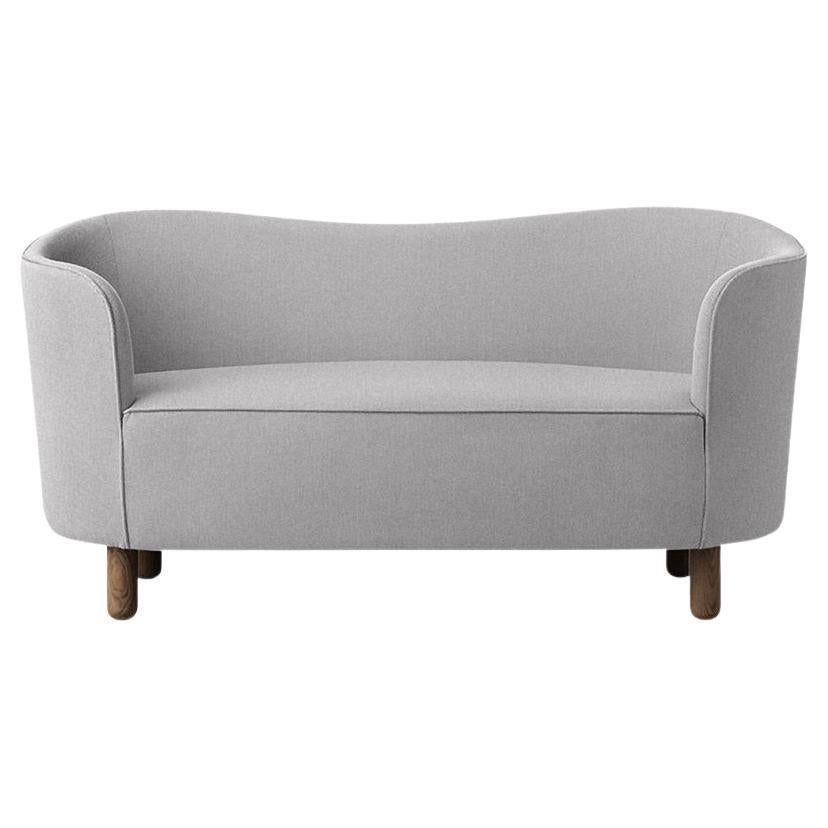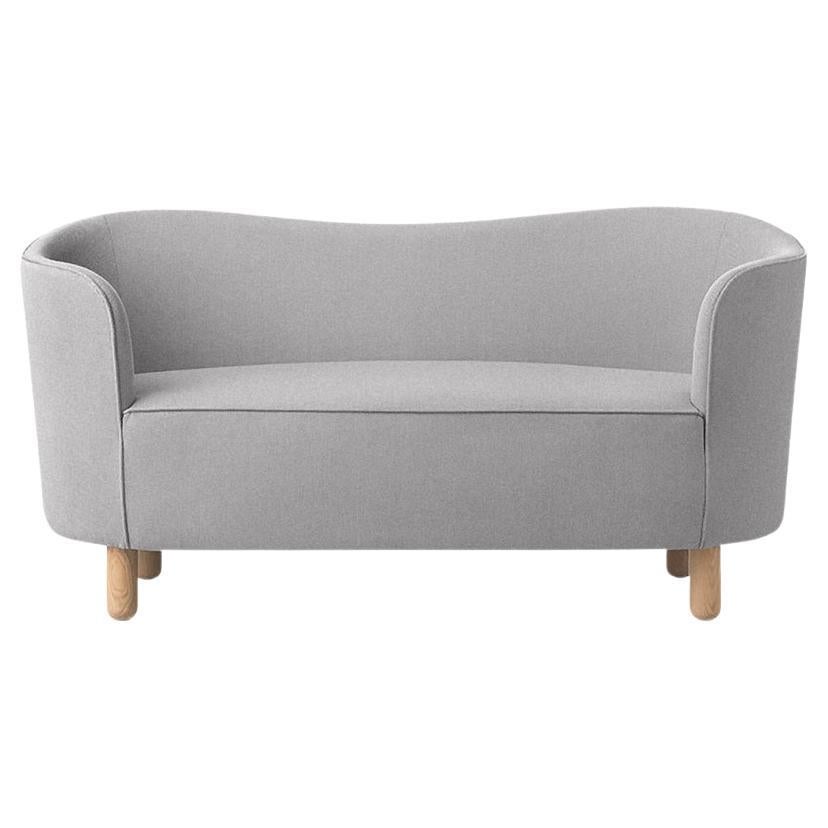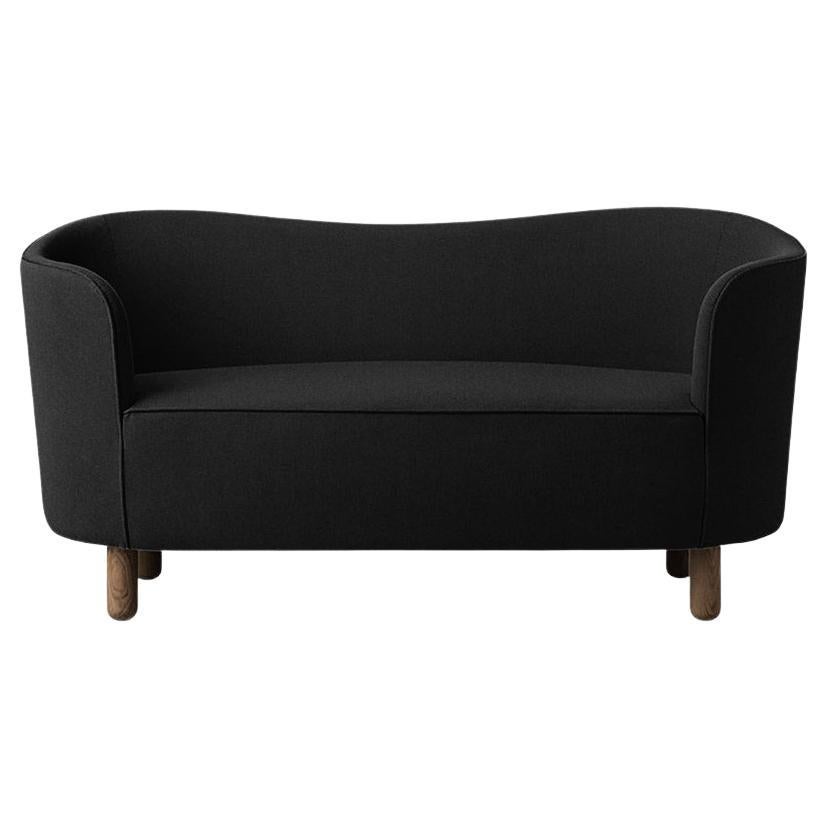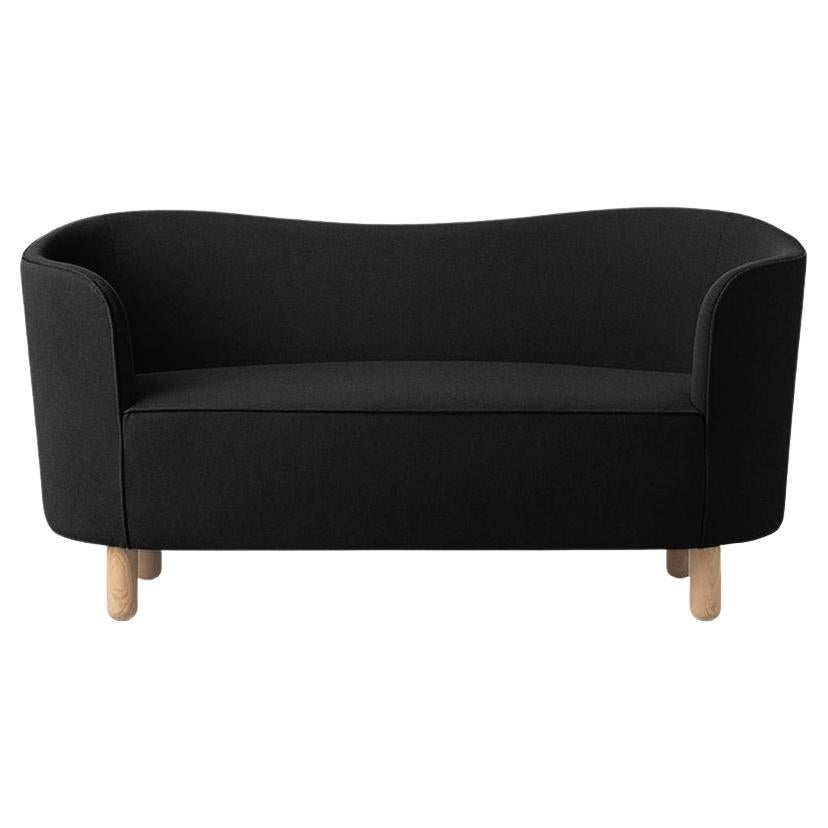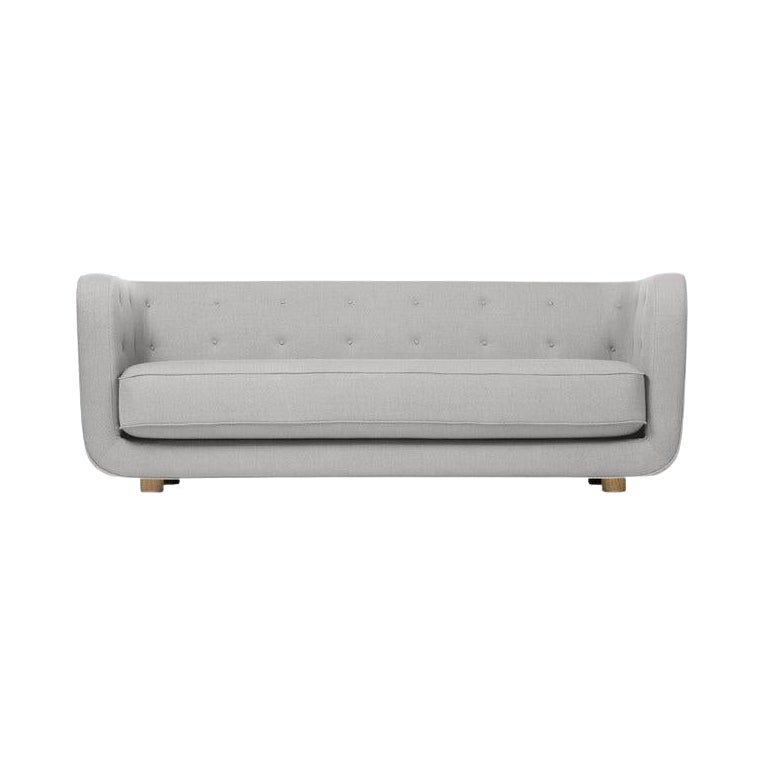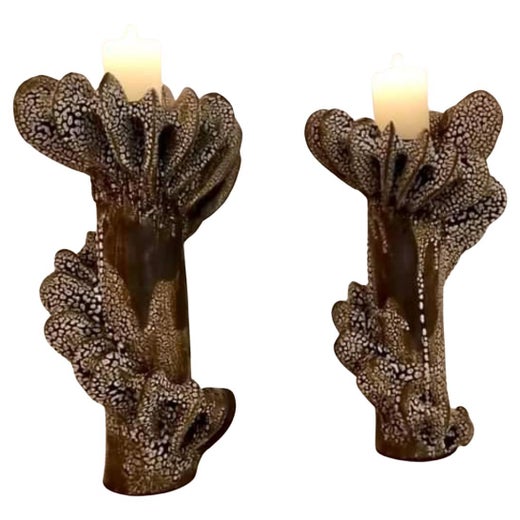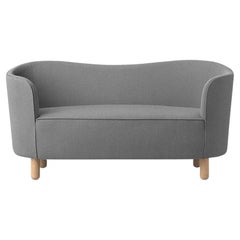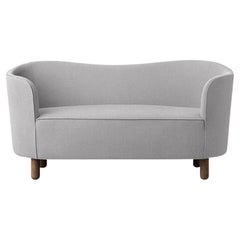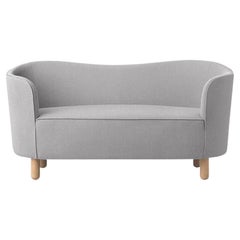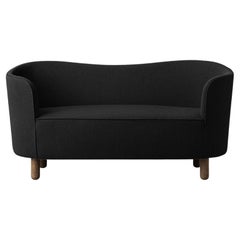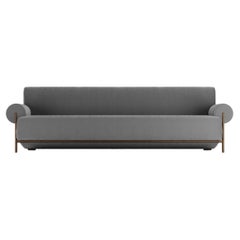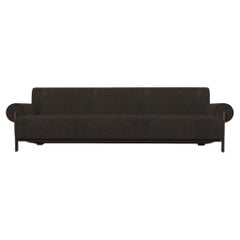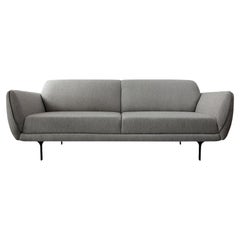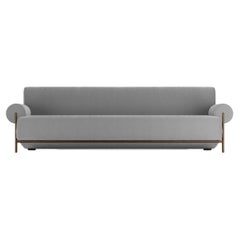Items Similar to Grey and Smoked Oak Raf Simons Vidar 3 Mingle Sofa by Lassen
Want more images or videos?
Request additional images or videos from the seller
1 of 7
Grey and Smoked Oak Raf Simons Vidar 3 Mingle Sofa by Lassen
$12,353.85per item
£9,224.12per item
€10,410per item
CA$17,356.93per item
A$18,990.80per item
CHF 9,799.20per item
MX$227,412.82per item
NOK 124,405.49per item
SEK 116,555.95per item
DKK 79,295.94per item
Quantity
About the Item
Grey and smoked oak Raf Simons Vidar 3 mingle sofa by Lassen.
Dimensions: W 154 x D 68 x H 74 cm.
Materials: Textile, oak.
The Mingle sofa was designed in 1935 by architect Flemming Lassen (1902-1984) and was presented at The Copenhagen Cabinetmakers’ Guild Competition in the same year. It was subsequently praised for its qualities as a small but elegant sofa in the professional journal “The Architect”. Flemming Lassen loved to travel, and he was often inspired by his journeys throughout Europe. He was very taken with both Italy and France, and had a burning desire to tour those countries on his motorcycle. Flemming Lassen wanted to create a sofa made for conversation with a comfort that invited people to stay seated and talk together for long periods of time. The armrests were designed to encircle the sitters, generating intimacy and transforming the sofa into a cosy place to relax. Flemming Lassen took inspiration from both French elegance and modern Italian style, and transferred the trends and his own ideas to a small, upholstered sofa called Mingle.
By Lassen is a Danish design brand focused on iconic designs created by Mogens and Flemming Lassen, founded by Lassens’ relatives in 2008. Brothers Mogens (1901-1987) and Flemming (1902-1984) Lassen are known as two of Denmark’s greatest architects and designers. Both were renowned pioneers of Danish functionalism and modernist architecture, honoured with numerous prestigious medals and awards. Headed by Mogens Lassen’s grandson Søren Lassen, By Lassen carries on the brothers’ design philosophy by manufacturing their iconic designs as well as products by other designers that complement the Lassen’s functionalist style. The company’s mission is to continue the tradition of timelessness, functionality and quality, and to introduce the Lassen’s design heritage to new generations.
- Dimensions:Height: 29.14 in (74 cm)Width: 60.63 in (154 cm)Depth: 26.78 in (68 cm)
- Style:Modern (Of the Period)
- Materials and Techniques:
- Place of Origin:
- Period:
- Date of Manufacture:2022
- Production Type:New & Custom(Current Production)
- Estimated Production Time:9-10 weeks
- Condition:
- Seller Location:Geneve, CH
- Reference Number:1stDibs: LU1219232916862
Galerie Philia
Galerie Philia is an international contemporary sculptural design and art gallery representing emerging and established designers and artists. The gallery is the brainchild of two brothers who share a lifetime passion for art, literature and philosophy. Their distinct academic background sets them apart from their peers, as it sees them following a rhizomatic and transcultural approach in the way they select works. This involves combining elements from multiple cultures in what becomes a network of harmoniously interconnected roots, ultimately revealing the beauty of each unique creation. The gallery’s non-hierarchical curation sits apart from the ephemerality of trends and focuses instead on the true aesthetic quality of the piece – alluring and timeless. Unlike others, Galerie Philia does not focus on a single style – whether minimalist, organic or raw – but rather embraces heterogeneity. The Galerie Philia takes pride in discovering new talents, providing them with multiple international platforms to showcase their latest creations. As well as propelling the newest generation of 21st century collectible design, Galerie Philia also works with internationally known design artists. Galerie Philia has a strong international presence, with galleries in Geneva, New York and Singapore. In addition to their permanent spaces, the gallery organizes temporary group exhibitions and artists residencies in first-class locations around the world.
Made to order creations can be done: please contact us for any request.
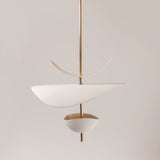
About the Seller
5.0
Recognized Seller
These prestigious sellers are industry leaders and represent the highest echelon for item quality and design.
Diamond Seller
Premium sellers with a 4.7+ rating and 24-hour response times
Established in 2015
1stDibs seller since 2015
5,082 sales on 1stDibs
Typical response time: <1 hour
- ShippingRetrieving quote...Shipping from: Copenhagen, Denmark
- Return Policy
Authenticity Guarantee
In the unlikely event there’s an issue with an item’s authenticity, contact us within 1 year for a full refund. DetailsMoney-Back Guarantee
If your item is not as described, is damaged in transit, or does not arrive, contact us within 7 days for a full refund. Details24-Hour Cancellation
You have a 24-hour grace period in which to reconsider your purchase, with no questions asked.Vetted Professional Sellers
Our world-class sellers must adhere to strict standards for service and quality, maintaining the integrity of our listings.Price-Match Guarantee
If you find that a seller listed the same item for a lower price elsewhere, we’ll match it.Trusted Global Delivery
Our best-in-class carrier network provides specialized shipping options worldwide, including custom delivery.More From This Seller
View AllGrey and Natural Oak Raf Simons Vidar 3 Mingle Sofa by Lassen
Located in Geneve, CH
Grey and natural oak Raf Simons Vidar 3 Mingle sofa by Lassen.
Dimensions: W 154 x D 68 x H 74 cm
Materials: Textile, oak.
The Mingle sofa was designed in 1935 by architect Fle...
Category
2010s Danish Modern Living Room Sets
Materials
Textile, Oak
Light Grey and Smoked Oak Raf Simons Vidar 3 Mingle Sofa by Lassen
Located in Geneve, CH
Light grey and smoked oak Raf Simons vidar 3 mingle sofa by Lassen
Dimensions: W 154 x D 68 x H 74 cm
Materials: textile, oak.
The Mingle sofa was designed in 1935 by architect...
Category
2010s Danish Modern Living Room Sets
Materials
Textile, Oak
Light Grey and Natural Oak Raf Simons Vidar 3 Mingle Sofa by Lassen
Located in Geneve, CH
Light grey and natural oak Raf Simons vidar 3 mingle sofa by Lassen
Dimensions: W 154 x D 68 x H 74 cm
Materials: Textile, Oak.
The Mingle sofa was designed in 1935 by architec...
Category
2010s Danish Modern Living Room Sets
Materials
Textile, Oak
Dark Grey and Smoked Oak Raf Simons Vidar 3 Mingle Sofa by Lassen
Located in Geneve, CH
Dark grey and smoked oak Raf Simons Vidar 3 mingle sofa by Lassen.
Dimensions : W 154 x D 68 x H 74 cm
Materials: Textile, oak.
The Mingle sofa was designed in 1935 by architec...
Category
2010s Danish Modern Living Room Sets
Materials
Textile, Oak
Dark Grey and Natural Oak Raf Simons Vidar 3 Mingle Sofa by Lassen
Located in Geneve, CH
Dark grey and natural oak raf simons vidar 3 mingle sofa by Lassen.
Dimensions: W 154 x D 68 x H 74 cm.
Materials: Textile, Oak.
The Mingle sofa was designed in 1935 by archite...
Category
2010s Danish Modern Living Room Sets
Materials
Textile, Oak
Grey and Smoked Oak Raf Simons Vidar 3 Vilhelm Sofa by Lassen
Located in Geneve, CH
Grey and smoked oak Raf Simons Vidar 3 Vilhelm sofa by Lassen
Dimensions: W 217 x D 88 x H 80 cm
Materials: Textile, Oak.
Vilhelm is a beautiful padded three-seater sofa design...
Category
2010s Danish Modern Living Room Sets
Materials
Textile, Oak
You May Also Like
Contemporary Modern Paloma Sofa in Bouclé Charcoal Grey by Collector
Located in Castelo da Maia, PT
Underpinned by a minimalist and sophistication aesthetic of clean lines.
Paloma sofa designed by Bernhardt & Vella for Collector Studio.
Dimension
W 240 cm 98,4”
D 85cm 33.5”
H 7...
Category
2010s Lounge Chairs
Materials
Fabric, Oak
Contemporary Modern Paloma Sofa in Famiglia 52 and Smoked Oak by Collector
Located in Castelo da Maia, PT
Underpinned by a Minimalist and sophistication aesthetic of clean lines.
Paloma Sofa designed by Bernhardt & Vella for Collector Studio.
Dimension:
W 240 cm 98,4”
D 85cm 33.5”
H 7...
Category
2010s Lounge Chairs
Materials
Fabric, Oak
"Nie" Sofa Minimalist Style in Gray Fabric
By Alessandra Delgado
Located in Alto da Lapa, SP
The name Nie emerges as an affectionate nickname for Oscar Niemeyer, whose work Alessandra was inspired by his creation. The design of the piece refers to the femininity of the maste...
Category
21st Century and Contemporary Brazilian Modern Sofas
Materials
Fabric
Contemporary Modern Paloma Sofa in Bouclé Light Grey by Collector
Located in Castelo da Maia, PT
Underpinned by a minimalist and sophistication aesthetic of clean lines.
Paloma Sofa designed by Bernhardt & Vella for Collector Studio.
Dimension
W 240 cm 98,4”
D 85cm 33.5”
H 7...
Category
2010s Lounge Chairs
Materials
Fabric, Oak
'Studio' Sofa by Norr11, Modular Sofa, Setup 1, Grey
By Norr11
Located in Paris, IDF
Studio sofa by Kristian Sofus Hansen & Tommy Hyldahl for Nor11
Setup 1 (2x medium, 1x ottoman, 1x armrest):
Measures: L 240cm / P 96cm / H 70cm / seating H 42cm
Model shown on main...
Category
21st Century and Contemporary Danish Organic Modern Sofas
Materials
Foam
$7,381 / item
Contemporary Sofa 'Marina' by Obstacles, Grey Fabric K04 and Oak Wood
By Yoyo Balagué, Obstacles
Located in Paris, IDF
'Marina' Sofa designed by Studio Obstacles in collaboration with Spanish artist Yoyo Balagué.
Dimensions:
W. 235 x L. 98 x H. 70 cm
W. 92.52 x L. 38.58 x H. 27.56 in
Wood finishes:...
Category
21st Century and Contemporary Spanish Modern Sofas
Materials
Fabric, Oak
Read More
Galerie Philia Unveils Limited-Edition Designs at Giampiero Tagliaferri’s New L.A. Studio
For the exhibition “Materia Perpetua,” the gallery asked an international group of makers — including Tagliaferri — to explore the possibilities of a surprisingly versatile material: onyx.
Galerie Philia Doesn’t Just Discover Fresh Design Talent — It Grows It
With an impressive slate of international exhibitions, the Geneva-based gallery raises the profiles of emerging designers.
More Ways To Browse
Conversation Couch
Art Deco Lounge Suite
Empire Parlor Set
Fleur Sofa
Fred Lowen Tessa Black
Hickory Chair Leather Sofa
Hoffmann Buenos Aires
Inga Sempe Moel
Jan Erik Lindgren
Pieff Mandarin
Swan Chair Green Leather
Vogue Rattan Chairs
A Brandt Co
Beka Sofa
Ducrot Studio
Ekornes Amigo
Guy Rogers New Yorker
Julius Josef Herrmann
